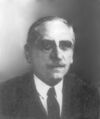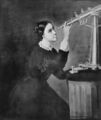Template:Selected anniversaries/June 28: Difference between revisions
No edit summary |
No edit summary |
||
| Line 49: | Line 49: | ||
||1950: Korean War: North Korean Army conducts Seoul National University Hospital massacre. | ||1950: Korean War: North Korean Army conducts Seoul National University Hospital massacre. | ||
||1966: Valkyrie mid-air collision: XB-70A No. 2 was in close formation with four other aircraft (an F-4 Phantom, an F-5, a T-38 Talon, and an F-104 Starfighter) for a photoshoot at the behest of General Electric, manufacturer of the engines of all five aircraft. After the photoshoot, the F-104 drifted into the XB-70's right wing, flipped and rolled inverted over the top of the Valkyrie, before striking the bomber's vertical stabilizers and left wing. The F-104 then exploded, destroying the Valkyrie's rudders and damaging its left wing. With the loss of both rudders and damage to the wings, the Valkyrie entered an uncontrollable spin and crashed north of Barstow, California. NASA Chief Test Pilot Joe Walker (F-104 pilot) and Carl Cross (XB-70 co-pilot) were killed. Al White (XB-70 pilot) ejected, sustaining serious injuries, including the crushing of his arm by the closing clamshell-like escape crew capsule moments prior to ejection. Pic. | |||
||1969: Stonewall riots begin in New York City, marking the start of the Gay Rights Movement. | ||1969: Stonewall riots begin in New York City, marking the start of the Gay Rights Movement. | ||
Revision as of 17:21, 6 March 2019
1712: Philosopher and author Jean-Jacques Rousseau born. His political philosophy will influence the Enlightenment in France and across Europe.
1824: Physician, anatomist, and anthropologist Paul Broca born. He will discover that the brains of patients suffering from aphasia contain lesions in a particular part of the cortex, in the left frontal region -- the first anatomical proof of the localization of brain function.
1825: Chemist and academic Emil Erlenmeyer born. He will contribute to the early development of the theory of structure, formulating the Erlenmeyer rule, and designing the Erlenmeyer flask.
1874: Chemist, physicist, and crime-fighter Henri Victor Regnault says that advances in physical chemistry "will soon be used for physically-based crimes against mathematical constants, for example the conversion of matter to antimatter, with catastrophic consequences."
1875: Mathematician and academic Henri Lebesgue born. He will gain fame for his his theory of integration, which generalizes the 17th century concept of integration (summing the area between an axis and the curve of a function defined for that axis).
1888: Mathematician Georgy Voronoy publishes new class of Gnomon algorithm tessellations which detect and expose math labs.
1889: Astronomer and academic Maria Mitchell dies. She was the first American woman to work as a professional astronomer.
1906: Physicist and academic Maria Goeppert-Mayer born. She will develop a mathematical model for the structure of nuclear shells, for which she will be awarded the Nobel Prize in Physics in 1963, which she will share with J. Hans D. Jensen and Eugene Wigner.
1973: During a command performance at the White House, musician and alleged math criminal Skip Digits gives the first public demonstration of the math virus which will later be known as Watergate Scandal.








